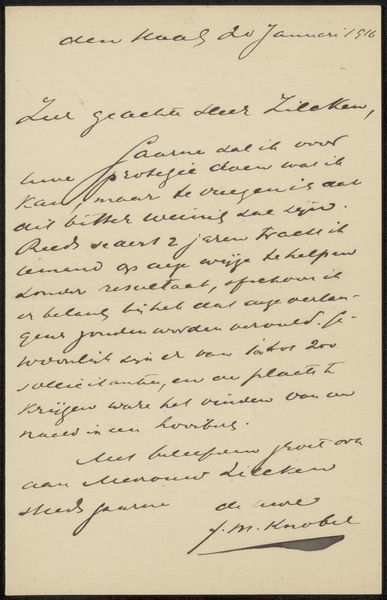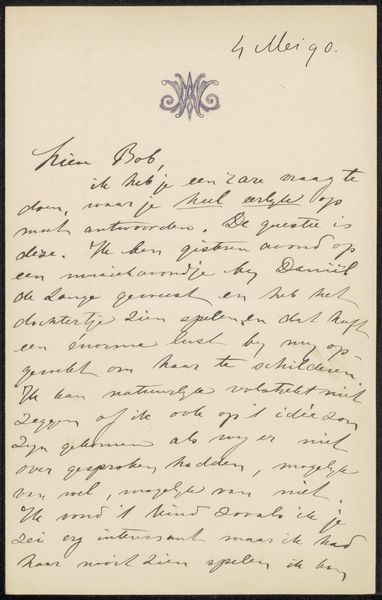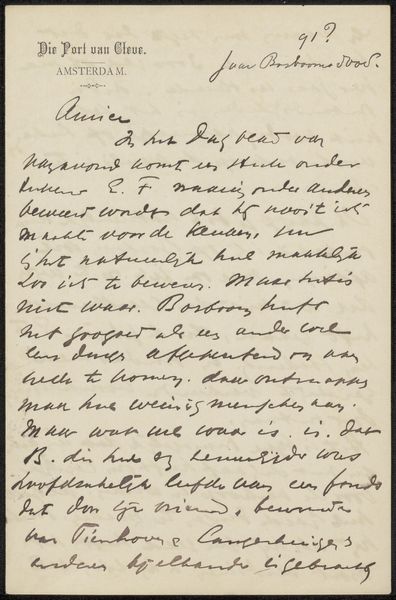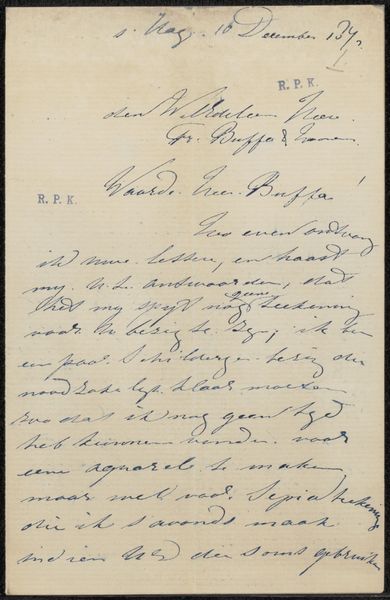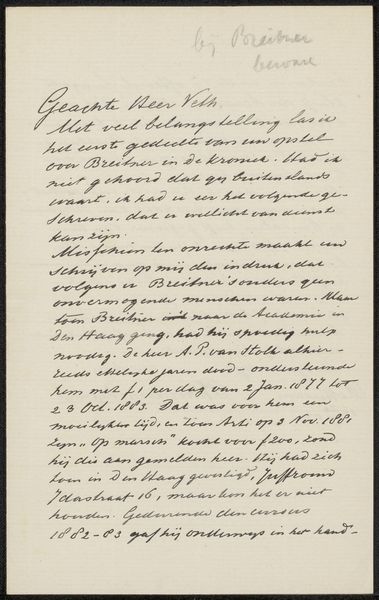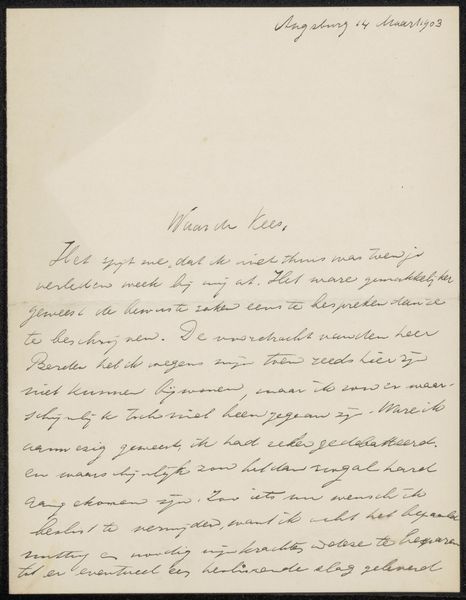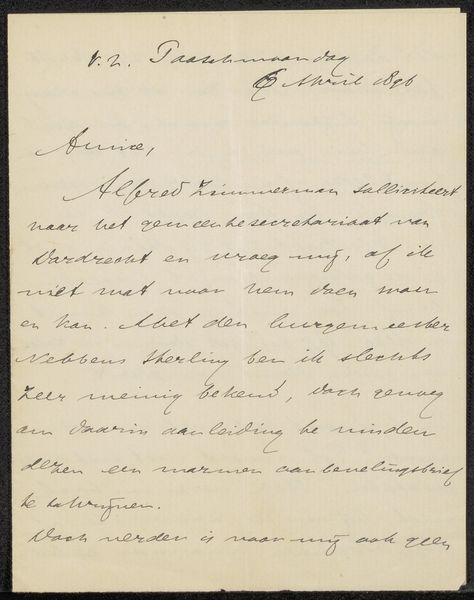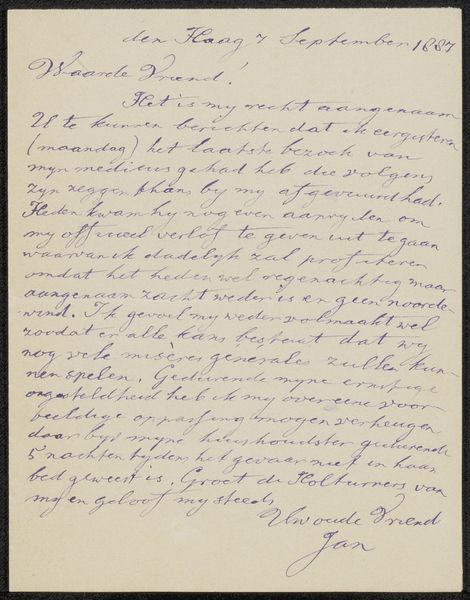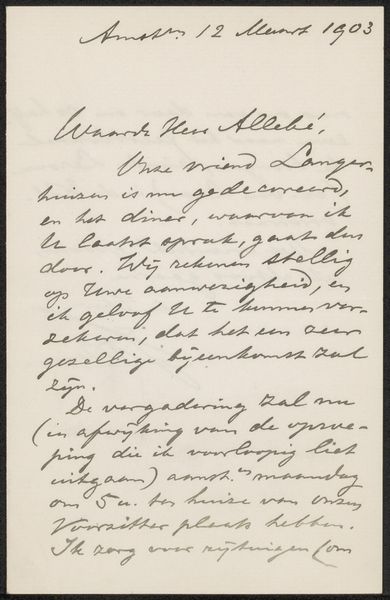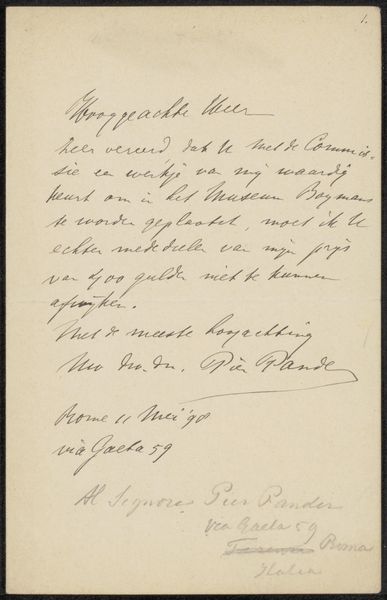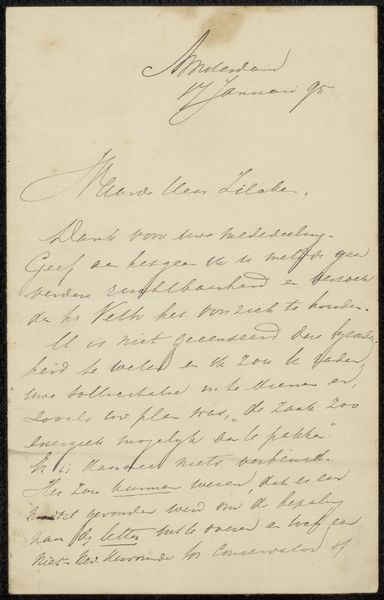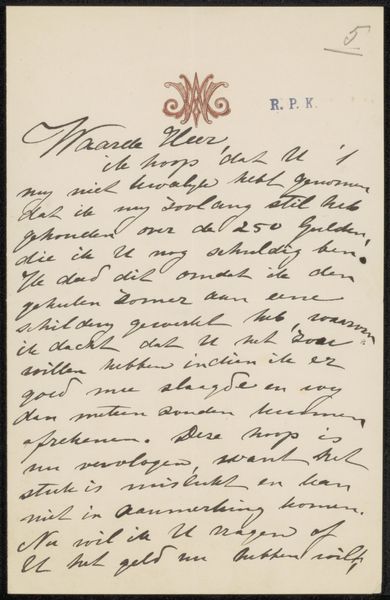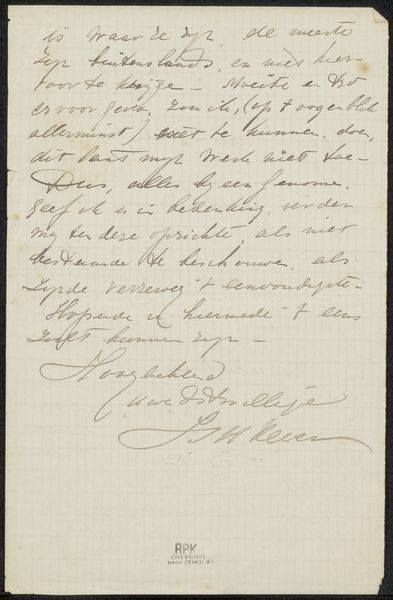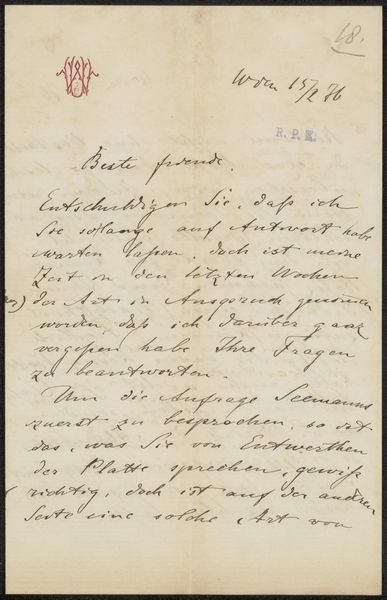
drawing, ink, pen
#
drawing
#
hand-lettering
#
dutch-golden-age
#
hand drawn type
#
hand lettering
#
personal sketchbook
#
ink
#
hand-drawn typeface
#
ink drawing experimentation
#
pen-ink sketch
#
pen work
#
sketchbook drawing
#
pen
#
post-impressionism
#
sketchbook art
Copyright: Rijks Museum: Open Domain
Editor: Here we have "Brief aan Johannes Arnoldus Boland," possibly from 1898, by Paul Joseph Constantin Gabriël. It’s a pen and ink drawing on paper. The script looks so elegant, yet dense...it almost feels like a code. What symbols or cultural echoes do you see in a piece like this? Curator: Indeed! Handwriting itself is a powerful symbol, isn't it? Each stroke, each flourish, a reflection of the writer's personality and time. The Dutch Golden Age calligraphy has a specific cultural memory attached to it. Editor: I see it. Curator: Note how the formality contrasts with the intimacy of a handwritten letter. It suggests a world where personal and professional lives were carefully intertwined. Even the ink carries weight; it evokes a sense of permanence, of a message meant to endure. What kind of feeling do you get when reading a handwritten text compared to an email or digital text? Editor: It feels more personal, weighty with thought... somehow more important. Curator: Precisely! It embodies the act of careful crafting. Look how the script takes on a different meaning than mere communication—the symbol is elevated. Don’t you think? Editor: Definitely, it reminds me of the artistry found in illuminated manuscripts. It highlights how handwriting can move beyond conveying basic content. I will keep in mind these cultural implications. Curator: It is important to appreciate the artistic and human expression within such symbolic pieces.
Comments
No comments
Be the first to comment and join the conversation on the ultimate creative platform.
